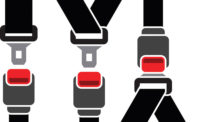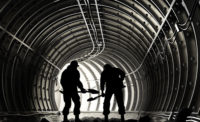In his mega-popular book Blink, Malcolm Gladwell centers his thesis on the claim (supported abundantly) that experts come to the point where “they just know.” They develop intuition, based on diligent practice (in another of his best-sellers, Gladwell says “10,000 hours” of concentrated practice is necessary to achieve expertise in any endeavor). So experts get the answer without having to go through a step-by-step process of analysis.
Psychologists call this approach “top-down” information processing, as opposed to “bottom-up” processing. They also use the term “fast and frugal heuristics” to capture the phenomenon of quickly getting the answer, assessing the probabilities, without having to do math. Based on experience, you just know, faster than you possibly could via painstaking, rational analysis.
Assessing safety culture
My assessment of safety cultures is definitely top-down, fast and frugal. Based on my 10,000 hours (and more), at this point I just know. But let me unpack my intuition and explain how I just know.
Let’s take a typical plant tour, where I am escorted by a plant manager or production supervisor (usually), or an HR director, EHS director, or lead man (less commonly).
First, did I get any sort of site-specific safety briefing? As we tour I notice the most visible markers, the surface-level “artifacts” predictive of the safety culture, starting with the physical environment.
What about housekeeping? Are work areas clean and free from product buildup and other avoidable hazards?
Are required PPE and proper tools available and in good shape? Are workers using them? Critically, is my host using required PPE, and did he/she require that I use it? (You’d be surprised).
How about the safety signage? Is it up to date, and posted in places where it will get attention and actually serve as an “activator” of safe work, as intended? Are walkways (and no-walk ways) clearly marked?
Are there machine guards and handrails where there need to be?
Observing engagement
I also pay close attention to the interaction (or lack of same) between my host and any/ all employees we encounter and observe on our walkabout. Easy, comfortable conversation suggests a team atmosphere, employee engagement, and other quality of work life indicators that promote safe work.
At the other extreme, is there no interaction, or negative interaction? Do the employees we encounter appear to be cautions… quiet… intimidated… even hostile, in the presence of a “boss type” and a stranger? If my host speaks to them, and even introduces me (rarely done, by the way), do they appear comfortable? Or do they act like they are not used to being spoken to and acknowledged by “higher ups”?
Bringing up the safety issue
If I get the opportunity, even if safety is not my primary consulting assignment, I also talk to internal “customers” individually about safety. Every employee has an opinion about how their company approaches safety. Some may have a spin they want to sell to the inquisitive visitor. But if I can talk to even three or four people, definitely including some of the hourly employees who do the work (not just their bosses and their bosses’ bosses), I get a pretty good view of the daily working climate, and more broadly, the actual overall safety culture that employees experience.
If I also can get the opportunity to talk with whoever is identified as the “champion” of the safety effort, I can quickly get a whole lot of information, sometimes as much information as I get from all the other pieces I have identified. Is there visible passion, content expertise, clear vision and strategy, openness about the strengths and weaknesses of the current approach, eagerness to share ideas with me? As always, leadership makes the difference.
Subtle markers of safety
In a typical site visit, I usually do not have an opportunity to directly observe any of what I call the “secondary” markers of a safe workplace. Are employees willing to speak up and stop a co-worker from committing an unsafe act? Do safety meetings and other safety-oriented communications truly activate awareness and promote safe work? Are near-miss events discussed openly and without jeopardy, and are lessons learned? When safety hazards are identified; are they quickly corrected?
Misleading metrics
Finally, and critically, note that I have not said anything about the lagging indicators, the safety-performance metrics. If OSHA recordables, lost workdays, etc. are high off the charts, obviously that is major concern. It suggests the safety culture is not where it needs to be.
Not surprisingly, such “bad numbers” are a common reason I’m asked to come in and help. But, critically, if all the lagging indicators look “OK,” that in itself doesn’t really describe the culture of safety. As readers of ISHN know, it’s possible to have few or no accidents yet still be very unsafe. I have absolutely no quarrel with the banners that proudly proclaim “X Hours Without an Accident;” it’s just that they don’t tell you much, if anything, about the safety culture.
In my experience, my first impression of the safety culture, established on the initial tour, is accurate the vast majority of the time. When I have the chance to expand on it with meaningful data on the secondary markers, I have rarely needed to substantially revise the impression that I got in a “blink.” Oh, and it took me a lot longer to unpack the critical factors for this column than it ever does for me to… just know.




